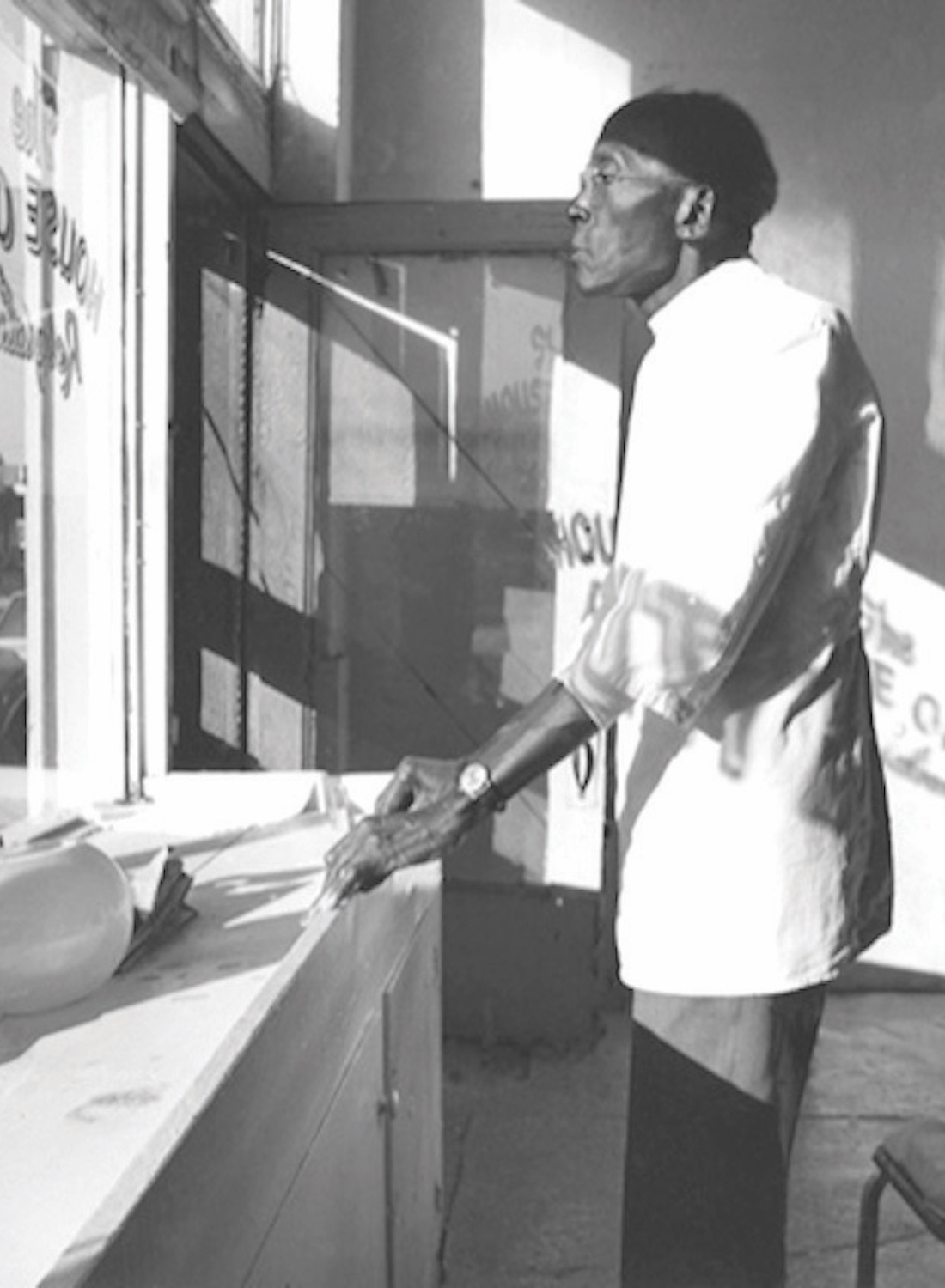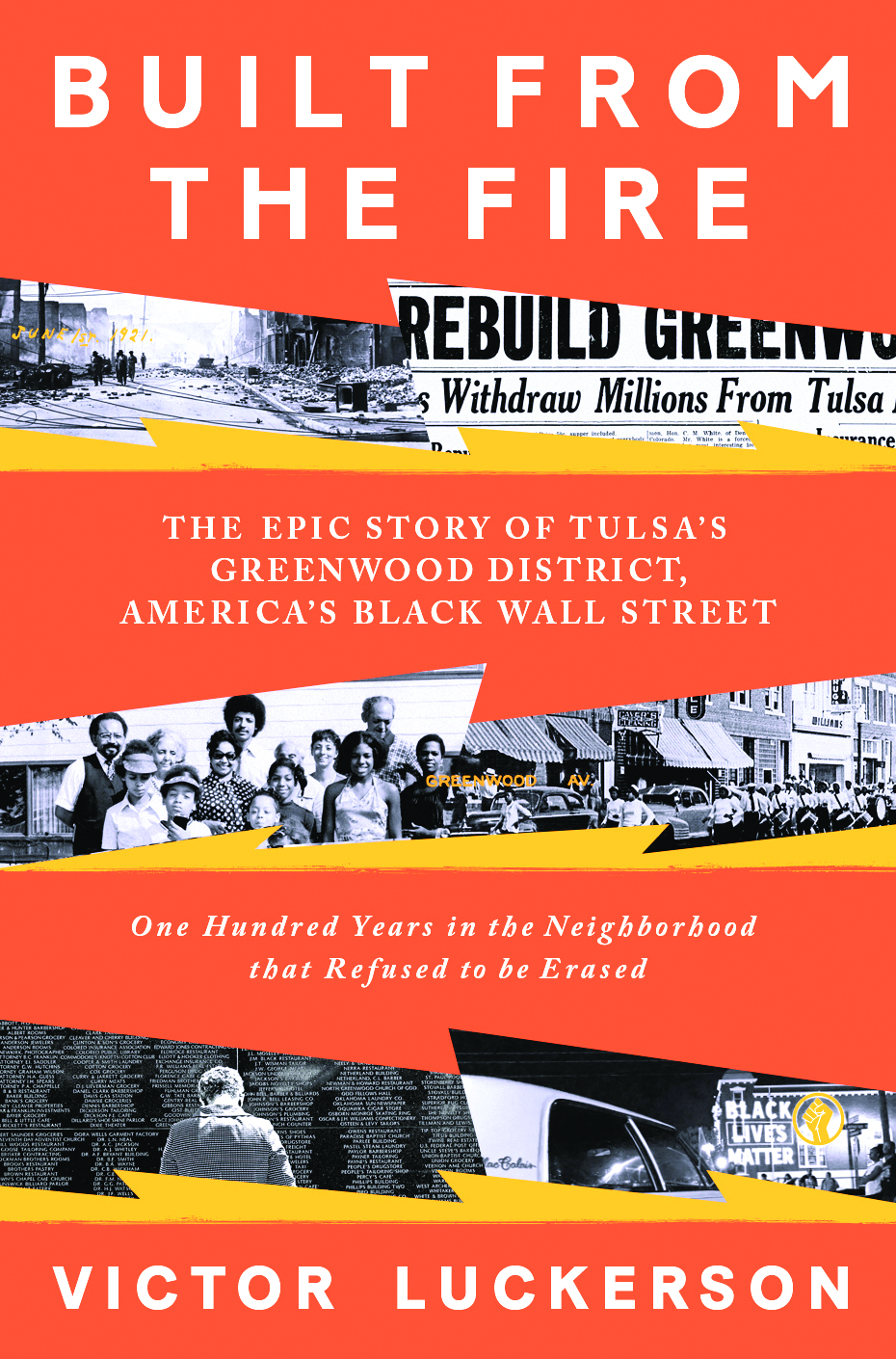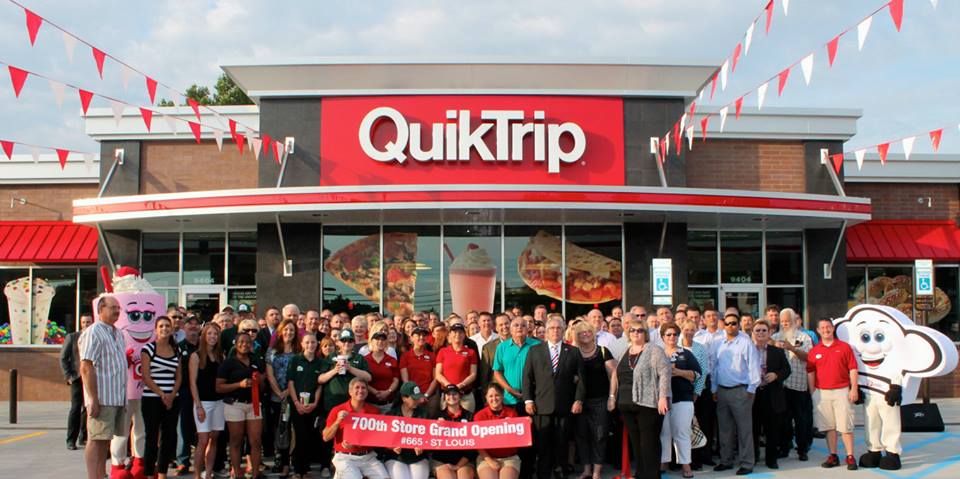
TALK OF GREENWOOD
Program to cover chapters in ‘Built from the Fire: The Epic Story of Tulsa’s Greenwood District, America’s Black Wall Street’
Dr. Jerry Goodwin
Featured Image. A barber at the Baltimore Barbershop looks out on Greenwood Avenue. (circa 1970). Photo Provided
The third program in a five-part series on the chapters of “Built from the Fire: The Epic Story of Tulsa’s Greenwood District, America’s Black Wall Street” will be held at Oklahoma State University-Tulsa auditorium, 700 N. Greenwood Ave., on Feb. 1 at 7 p.m. The free series will cover Chapters 16-20 of the award-winning book.
Author and National Magazine Award nominee Victor Luckerson will discuss the personal and political impacts of urban renewal with nationally recognized photographer Don Thompson.

Doing Urban Renewal
“As I traveled around the country…, I met so many people in places like Atlanta, Seattle, and Birmingham who had stories about urban renewal that mirrored Greenwood’s. By diving deep on how highway construction and urban renewal decimated our local community, I wanted to shine a brighter light on a national phenomenon…,” said Luckerson.
Federal policies, including the Federal-Aid Highway Act, disproportionately and discriminatorily affected Black communities. To build an interstate highway system, Pres. Dwight Eisenhower signed legislation to aid in the construction of highway projects in metropolitan areas across the country. One of the goals was to increase traffic mobility in cities and reduce automobile congestion on the roads.
Unfortunately, with the building of the highway system, it impacted minority communities because the routings of the roadways were directed to divide and dissect predominantly Black communities. As in Tulsa, I-244 was built through the middle of North Greenwood Avenue. The Greenwood district is historically known as “Black Wall Street,” where the successes of Black businesses were used as a model for the country.
With the construction of the interstate, it divided and destroyed a storied Tulsa community that was an American example of entrepreneurship and capitalism.
Thompson said, “As a photojournalist, I wanted to document what I was witnessing, the deliberate and complete destruction of an American Black community. I wanted to document for present and future generations the destruction that was carried out without any thought to the lives and livelihood of those men and women being affected.”
According to sponsors of the program, in addition to the lecture segment, visuals from official sources (i.e. redlining and urban maps, land seizure letters to residents, and urban renewal reports) and Thompson’s collection will pictorially present what happened in Tulsa related to urban renewal.
“I was fortunate to work on Greenwood Avenue during the 1960s. I saw the vibrancy, the entrepreneurial spirit of the men and women as they operated their businesses up and down Greenwood Avenue. It was exciting to see them going about their tasks to make a living for themselves and others,” said Thompson.
“In the 1970s, Urban Renewal and Eminent Domain assaulted the Greenwood district soon after the city of Tulsa declared Greenwood a “Ghetto.” Urban Renewal (Black and Brown removal) undermined liberty and human dignity. It was a human tragedy that I call the “Second Massacre” of Greenwood Avenue.”
Undoing Urban Renewal
In Luckerson’s research, he learned that “Rochester, New York is probably the best example of a city that’s been able to undo some of the damage of urban renewal.” He continues saying in the late 2010s the city began removing a section of the Interstate that had taken out 250 homes when it was originally built. Now that space is being used for businesses and apartments, and community members are advocating reparations for the Black families whose homes were originally destroyed.”
“I hope through this event we are able to give people the tools they need to find out more about how their own families were impacted by these policies.”
Lecturers
Luckerson, a journalist who has written for The New Yorker, The New York Times, Wired, and Smithsonian magazine, tells the story of Greenwood from the perspective of race massacre survivors and descendants, and includes information from primary-source documents in his book, “Built from the Fire.” The book was selected as a winner in the Business Reporting category by the Society of American Business Editors and Writers. He was nominated for a National Magazine Award for his reporting in Time on the 1923 Rosewood Massacre.
Noted photographer Thompson has adroitly collected the life and vibrancy of a celebrated community through his work. His camerawork appears in the Smithsonian’s National Museum of African American History and Culture and Philbrook Museum of Art. He describes himself as a “social justice documentary photographer.” Currently, his exhibit, “Black Settlers in Tulsa: The Search for the Promised Land,” is on display at the OSU-Tulsa campus.
The five-part community read of Luckerson’s book is sponsored by the University of Tulsa’s Oklahoma Center for the Humanities, OSU-Tulsa Library, and the Tulsa City-County Library. Additional sponsors include All Souls Unitarian Church, the Historic Big 10 Ballroom, Fulton Street Books and Coffee, Magic City Books, The Black Wall Street Times, The Oklahoma Eagle and the North Tulsa Unity Book Club.
For more information about the series, see https://humanities.utulsa.edu/deep-greenwood/










